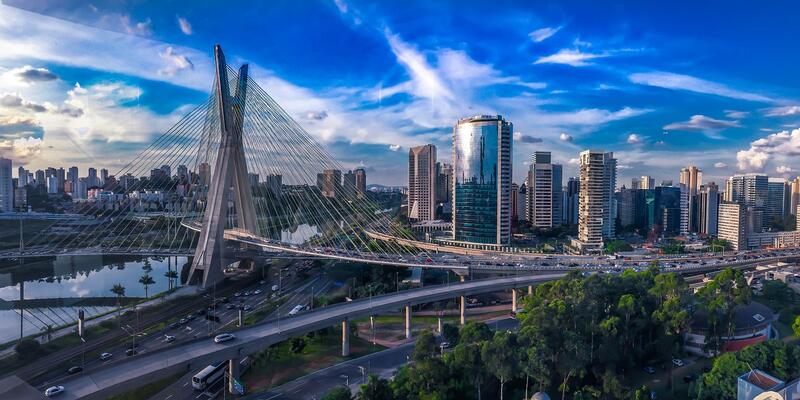Nurturing Sustainability: Approaches to Decarbonize Manufacture of flat glass
This article explores strategies to reduce carbon emissions in the manufacturing of flat glass, a material widely used in the construction industry.

The manufacture of flat glass is a significant contributor to greenhouse gas emissions. The industry is responsible for approximately 1% of global carbon dioxide emissions, which is equivalent to the emissions of the aviation industry. Decarbonisation of the flat glass manufacturing sector is, therefore, crucial in the fight against climate change. This article will explore the concept of decarbonisation in the manufacture of flat glass sector, the main sources of carbon emissions, strategies to reduce carbon emissions, challenges facing decarbonisation, and the implications of decarbonisation for the flat glass manufacturing sector.
What is Decarbonisation in the Manufacture of Flat Glass Sector and Why is it Important?
Decarbonisation refers to the process of reducing or eliminating carbon dioxide emissions from a particular sector or industry. In the manufacture of flat glass sector, decarbonisation involves reducing the amount of carbon dioxide emitted during the production process. Decarbonisation is essential in the fight against climate change. Carbon dioxide is a greenhouse gas that traps heat in the atmosphere, leading to global warming. The manufacture of flat glass is a significant contributor to carbon dioxide emissions, and reducing these emissions is crucial in mitigating the effects of climate change.
The Main Sources of Carbon Emissions in the Manufacture of Flat Glass Sector
The manufacture of flat glass involves several processes that emit carbon dioxide. The main sources of carbon emissions in the flat glass manufacturing sector include:
- Raw Materials: The production of flat glass requires raw materials such as sand, soda ash, and limestone. The extraction and processing of these materials emit carbon dioxide.
- Energy Consumption: The flat glass manufacturing process requires significant amounts of energy. The energy is used to melt the raw materials and shape the glass. The energy is usually generated from fossil fuels such as coal, oil, and natural gas, which emit carbon dioxide.
- Transportation: The transportation of raw materials and finished products also contributes to carbon emissions. The transportation of raw materials to the manufacturing site and the transportation of finished products to customers emit carbon dioxide.
How Can We Reduce Carbon Emissions in the Manufacture of Flat Glass Sector?
Reducing carbon emissions in the manufacture of flat glass sector requires a multi-pronged approach. The following are some strategies that can be employed to reduce carbon emissions:
- Use of Renewable Energy: The use of renewable energy sources such as solar, wind, and hydroelectric power can significantly reduce carbon emissions. Renewable energy sources do not emit carbon dioxide, and their use can help to decarbonise the flat glass manufacturing process.
- Energy Efficiency: The flat glass manufacturing process can be made more energy-efficient by using energy-efficient equipment and processes. This can reduce the amount of energy required to produce flat glass, leading to a reduction in carbon emissions.
- Carbon Capture and Storage: Carbon capture and storage (CCS) involves capturing carbon dioxide emissions from the manufacturing process and storing them underground. CCS can significantly reduce carbon emissions from the flat glass manufacturing process.
- Recycling: Recycling glass can significantly reduce the amount of energy required to produce new glass. This can lead to a reduction in carbon emissions.
- Process Optimization: Optimizing the flat glass manufacturing process can reduce the amount of energy required to produce flat glass. This can be achieved through process improvements such as reducing the amount of raw materials required, optimizing the melting process, and reducing the amount of waste generated.
What are the Challenges Facing Decarbonisation in the Manufacture of Flat Glass Sector?
Despite the potential benefits of decarbonisation, there are several challenges facing the flat glass manufacturing sector. The following are some of the challenges:
- Cost: Many decarbonisation strategies such as the use of renewable energy and carbon capture and storage are expensive. The high cost of these strategies may make it difficult for some companies to implement them.
- Lack of Technology: Some decarbonisation strategies such as carbon capture and storage require advanced technology that may not be available to all companies.
- Lack of Awareness: Some companies may not be aware of the benefits of decarbonisation or the strategies that can be employed to reduce carbon emissions.
- Regulatory Framework: The lack of a regulatory framework that incentivizes decarbonisation may make it difficult for companies to invest in decarbonisation strategies.
What are the Implications of Decarbonisation for the Manufacture of Flat Glass Sector?
Decarbonisation of the flat glass manufacturing sector has several implications. The following are some of the implications:
- Increased Efficiency: Decarbonisation strategies such as energy efficiency and process optimization can lead to increased efficiency in the flat glass manufacturing process. This can lead to cost savings and increased competitiveness.
- Reduced Carbon Footprint: Decarbonisation strategies can significantly reduce the carbon footprint of the flat glass manufacturing sector. This can help to mitigate the effects of climate change.
- Increased Innovation: Decarbonisation can drive innovation in the flat glass manufacturing sector. Companies may develop new technologies and processes that are more energy-efficient and environmentally friendly.
Conclusion
Decarbonisation of the flat glass manufacturing sector is crucial in the fight against climate change. The sector is a significant contributor to carbon dioxide emissions, and reducing these emissions is essential in mitigating the effects of climate change. Decarbonisation strategies such as the use of renewable energy, energy efficiency, carbon capture and storage, recycling, and process optimization can significantly reduce carbon emissions. However, there are several challenges facing decarbonisation, including cost, lack of technology, lack of awareness, and regulatory framework. Decarbonisation has several implications for the flat glass manufacturing sector, including increased efficiency, reduced carbon footprint, and increased innovation.